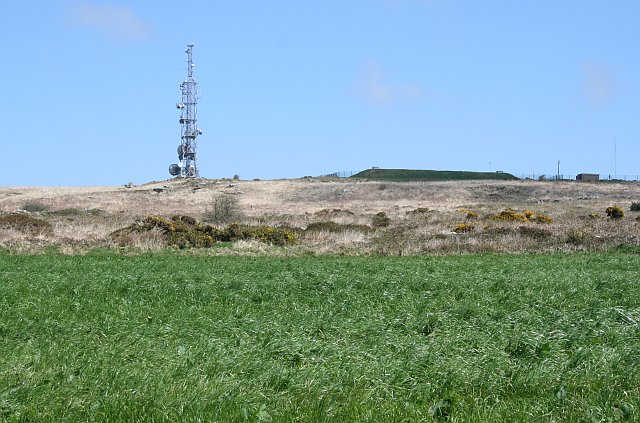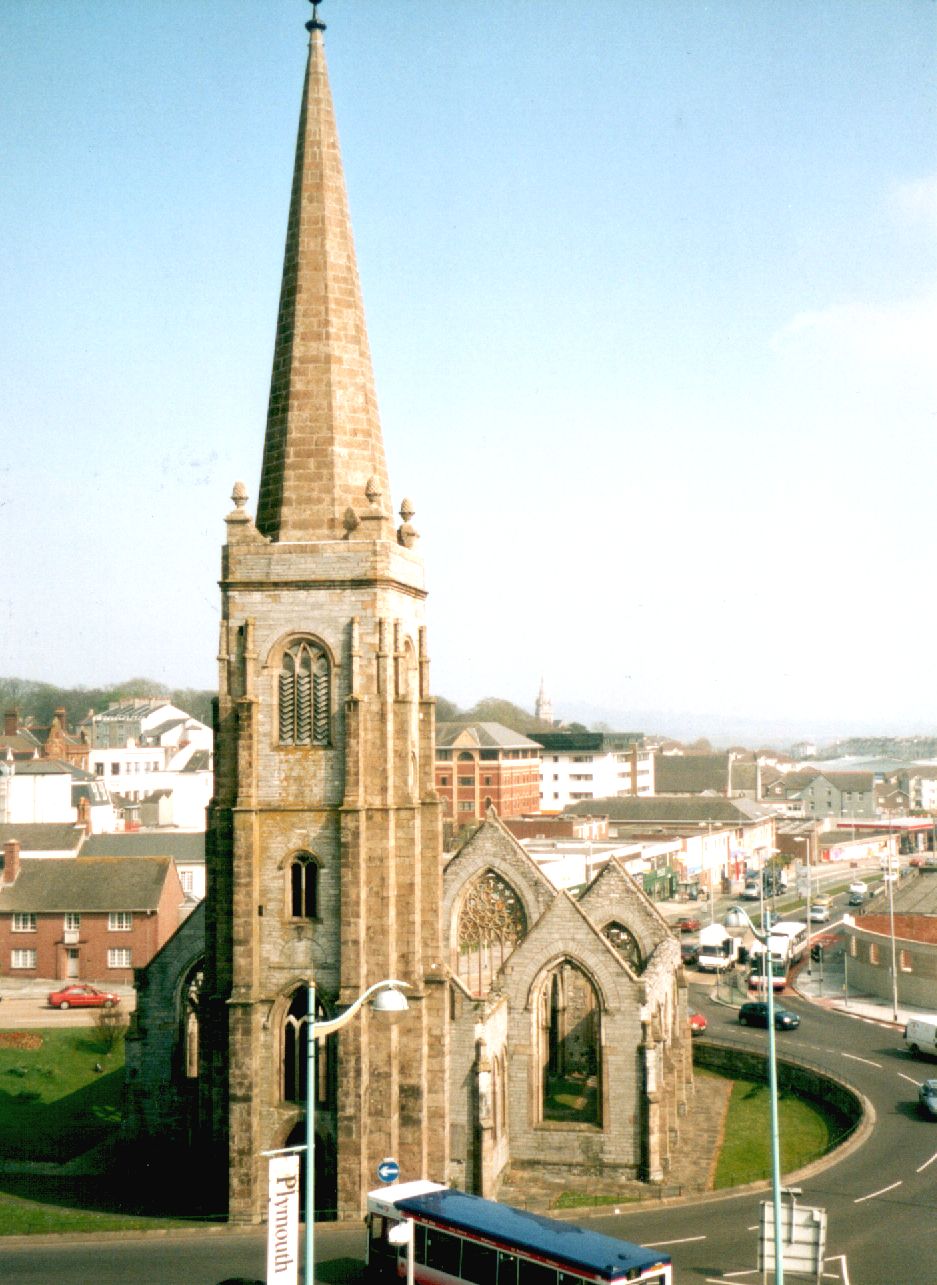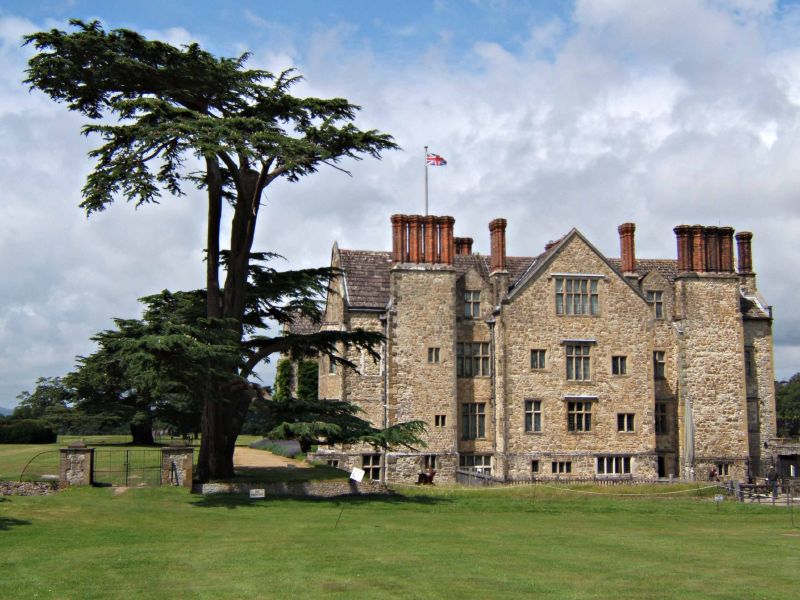|
Sir Cecil Bisshopp, 10th Baronet
The Bishopp Baronetcy, of Parham in the County of Sussex, was a baronetcy in the Baronetage of England. From around 1780 the name was sometimes also spelled Bisshopp. It was created 24 July 1620 for Sir Thomas Bishopp who had previously represented Gatton in Parliament. He was by then almost 70 years old and who had earlier been created a knight by King James I on 7 May 1603 at Theobalds, shortly after James's accession to the throne. Thomas Bishopp was the son of Thomas Bishopp and Elizabeth Belknap, heir and daughter of Sir Edward Belknap, who was active in the service of the English crown, both on the battlefield and as a court official. The second Baronet sat as Member of Parliament for Steyning and Bramber. The fourth Baronet was Member of Parliament for Bramber. The sixth Baronet represented Penrhyn and Boroughbridge in Parliament. The eighth Baronet was Member of Parliament for New Shoreham. In 1815 the abeyance of the ancient Barony of Zouche was terminated in his fav ... [...More Info...] [...Related Items...] OR: [Wikipedia] [Google] [Baidu] |
Baronetage Of England
Baronets are a rank in the British aristocracy. The current Baronetage of the United Kingdom has replaced the earlier but existing Baronetages of England, Nova Scotia, Ireland, and Great Britain. Baronetage of England (1611–1705) King James I created the hereditary Order of Baronets in England on 22 May 1611, for the settlement of Ireland. He offered the dignity to 200 gentlemen of good birth, with a clear estate of £1,000 a year, on condition that each one should pay a sum equivalent to three years' pay to 30 soldiers at 8d per day per man (total – £1,095) into the King's Exchequer. The Baronetage of England comprises all baronetcies created in the Kingdom of England before the Act of Union in 1707. In that year, the Baronetage of England and the Baronetage of Nova Scotia were replaced by the Baronetage of Great Britain. The extant baronetcies are listed below in order of precedence (i.e. date). All other baronetcies, including extinct, dormant (D), unproven (U), under ... [...More Info...] [...Related Items...] OR: [Wikipedia] [Google] [Baidu] |
Henry Bishop (postmaster General)
Henry Bishopp, (1605–1691), also spelt Bishop and Bisshopp, from Henfield in West Sussex, England was a Postmaster General of England and inventor of the first postmark used on mail. He was the second son of Sir Thomas Bishopp, 1st Baronet of Parham also in West Sussex.'Henfield: Manors and other estates', A History of the County of Sussex: Volume 6 Part 3: Bramber Rape (North-Eastern Part) including Crawley New Town (1987), pp. 140-145. Henry at first fought for King Charles I, but was reconciled with parliament in 1647, after spending two years in Virginia. In the meantime his Rectory estate in Henfield had been sequestered. However, he was restored to royal favour in 1660 and served as postmaster-general between that date and 1663. At his death in 1692 ( N.S.) his Rectory estate in Henfield passed to his great-nephew Sir Cecil Bishopp, 4th Baronet. Postmaster General Before the creation of the position of Postmaster General, control of the post was in the hands of "Master ... [...More Info...] [...Related Items...] OR: [Wikipedia] [Google] [Baidu] |
Royal Cornwall Gazette
The media in Cornwall has a long and distinct history. The county has a wide range of different types and quality of media. History Timeline Background Cornwall's geography, a long, narrowing peninsula, pointing into the Atlantic, made travel by land (Cornwall is only joined to Devon by a short four-mile stretch of land—the River Tamar divides the rest) slow, unreliable and poor. (Crossing the Tamar was by a few ancient stone bridges and two ferries to Plymouth). Selling and distribution (business), distribution of market goods used the sea and major rivers. However, improved telecommunications stimulated growth in the ports of Cornwall and the exchange of goods, particularly of mining products, like copper and tin. It also led to previously unexplored markets being discovered, for example arsenic, a by-product of tin production, was exported to the US, where it was used in the production of pesticides in the cotton field (agriculture), fields. Before the arrival of mass med ... [...More Info...] [...Related Items...] OR: [Wikipedia] [Google] [Baidu] |
Charles Church, Plymouth
Charles Church is a now derelict church, the second most ancient parish church in Plymouth, Devon, England. It was founded around 1640, but not completed for many years. It is a Gothic style church, consisting of a west tower, with spire, a nave with north and south aisles, north and south porches, and a chancel with vestry. The tower was completed in 1708, the original wooden/lead covered spire was replaced by a stone spire in 1766. During the nights of 21 and 22 March 1941, the church was entirely burned out by incendiary bombs during the Plymouth Blitz. When peace came it was decided not to rebuild the church. In 1958, at a service conducted by the vicar of the parish, J Allen James, the church was dedicated as a memorial for the 1,200 civilian deaths in air raids. There have been several histories made of the church including two written in the early 20th century. Most focus on the fabric of the building rather than the spiritual life of the church and ministers, of whom ... [...More Info...] [...Related Items...] OR: [Wikipedia] [Google] [Baidu] |
British Newspaper Archive
The British Newspaper Archive web site provides access to searchable digitized archives of British and Irish newspapers. It was launched in November 2011. History The British Library Newspapers section was based in Colindale in north London, until 2013, and is now divided between the St Pancras and Boston Spa sites. The library has an almost complete collection of British and Irish newspapers since 1840. This is partly because of the legal deposit legislation of 1869, which required newspapers to supply a copy of each edition of a newspaper to the library. London editions of national daily and Sunday newspapers are complete back to 1801. In total, the collection consists of 660,000 bound volumes and 370,000 reels of microfilm containing tens of millions of newspapers with 52,000 titles on 45 km of shelves. After the closure of Colindale in November 2013, access to the 750 million original printed pages was maintained via an automated and climate-controlled storage facilit ... [...More Info...] [...Related Items...] OR: [Wikipedia] [Google] [Baidu] |
James Hillyar
Admiral Sir James Hillyar KCB KCH (29 October 1769 – 10 July 1843) was a prominent British Royal Navy officer of the early nineteenth century, who is best known for his service in the frigate HMS ''Phoebe'' during the Napoleonic Wars and the War of 1812. While in command of ''Phoebe'', Hillyar was present at the Invasion of Ile de France in 1810, was heavily engaged at the Battle of Tamatave in 1811 and captured the USS ''Essex'' off Valparaíso in Chile in 1814. In addition, Hillyar was engaged in numerous other operations, his first battle occurring in 1781 off Boston. He remained in the Navy until his death in 1843, and was active at sea during the 1830s, commanding fleets in the North Sea and off Portugal. He was knighted twice and two of his sons later became full admirals, Charles Farrell Hillyar and Henry Shank Hillyar. His eldest daughter Mary Ann married January 1843 in Malta Sir Cecil Bisshopp, Bt of Parham in the County of Sussex. Life Hillyar was born in 1769, s ... [...More Info...] [...Related Items...] OR: [Wikipedia] [Google] [Baidu] |
George Bisshopp, 9th Baronet Of Parham
Sir George Bisshopp, 9th Baronet (5 July 1791 – 22 March 1834) was Sub-Dean of the Chapel Royal, Dublin from 1816 until 1831, and thereafter and Dean of Lismore from 1831 until 1834. Sir George was born on 5 July 1791, the only son of Edward Bisshopp, Esq. an eminent army agent (Bisshopp and Brummell of Vine Street, Piccadilly) who was the third son of Sir Cecil Bishopp, 6th Baronet, by the Hon. Anne Boscawen, second daughter of Hugh Boscawen, 1st Viscount Falmouth. His father Edward Bisshopp died in 1792 leaving a "very large fortune". The mother of Sir George was Jane, only daughter of William Atkinson, Esq. of Pall-mall. She was married secondly to the Rev. Lucius Coghlan, D.D. His father having died during his infancy, the charge of his education devolved on his mother's second husband, Dr. Coghlan. On the death of his cousin without living male issue in November 1828 Cecil, Lord De la Zouche, Sir George succeeded to the Baronetcy. He married, on 17 May 1820, Cath ... [...More Info...] [...Related Items...] OR: [Wikipedia] [Google] [Baidu] |
Cecil Bisshopp, 12th Baron Zouche
Cecil Bisshopp, 12th Baron Zouche, FRS (29 December 1752 – 11 November 1828) was a Member of Parliament for New Shoreham who afterwards became the 12th Baron Zouche. He was the eldest son of Sir Cecil Bisshopp, 7th Baronet of Parham Park, West Sussex and succeeded to the baronetcy on the death of his father in 1779. His mother was Susanna Hedges, daughter of Charles Hedges and Catherine Tate, through whom he claimed the Zouche title. He was awarded a DCL at Oxford University and in 1791 was elected a Fellow of the Royal Society. He entered Parliament in 1780 as the member for New Shoreham, sitting until 1790, and then again in 1796, sitting until 1806. In 1795, during the French Revolutionary Wars, he raised the Parham Troop of Sussex Yeomanry. It usually exercised at his estate at Parham Park, drilling in the gallery of the house when the weather was wet.L. Barlow & R.J. Smith, ''The Uniforms of the British Yeomanry Force 1794–1914, 1: The Sussex Yeomanry Cavalry'', Lon ... [...More Info...] [...Related Items...] OR: [Wikipedia] [Google] [Baidu] |
Sir Cecil Bishopp, 6th Baronet
Sir Cecil Bisshopp, 6th Baronet Bisshopp (30 October 1700 – 15 June 1778), was a British politician. He succeeded to the title of 6th Baronet Bishopp, of Parham, co. Sussex on 25 October 1725. He was Member of Parliament for Penryn between 1727 and 1734, having been returned unopposed on the interest of the Boscawen family into which he had married.The History of Parliament: the House of Commons 1715-1754, ed. R. Sedgwick, 1970 He also represented Boroughbridge between 1755 and 1768. He married Hon. Anne Boscawen, daughter of Hugh Boscawen, 1st Viscount Falmouth and Charlotte Godfrey, in 1726. In addition to Parham Park, Sussex he was also the owner of a house at 11 Berkeley Square, London which Horace Walpole purchased from Bisshopp's heirs in 1779 and in which Walpole lived until he died there in 1797. Sir Cecil died on 15 June 1778 at the age of 77. Issue Sir Cecil was noted for having a large number of children, at least thirteen, for the period, so many that it "c ... [...More Info...] [...Related Items...] OR: [Wikipedia] [Google] [Baidu] |
Sir Cecil Bishopp, 4th Baronet
Sir Cecil Bishopp, 4th Baronet ( 16353 June 1705) was an English landowner and politician who sat in the House of Commons from 1662. He was the brother of Sir Thomas Bishopp, 3rd Baronet (1627–1652). Bishopp was the son of Sir Edward Bishopp, 2nd Baronet of Parham and his wife Mary Tufton, daughter of Nicholas Tufton, 1st Earl of Thanet and Lady Frances Cecil. Lady Frances Cecil was the daughter of Thomas Cecil, 1st Earl of Exeter and Dorothy Neville. Thomas Cecil, 1st Earl of Exeter was the son of William Cecil, Lord Burghley. Subsequent Bishopp baronets carried the name Cecil in recognition of this influential ancestor. He succeeded to the baronetcy on the death of his brother in 1652. In 1662, he was elected Member of Parliament for Bramber in a by-election to the Cavalier Parliament The Cavalier Parliament of England lasted from 8 May 1661 until 24 January 1679. It was the longest English Parliament, and longer than any Great British or UK Parliament to date, enduri ... [...More Info...] [...Related Items...] OR: [Wikipedia] [Google] [Baidu] |
Sir Edward Bishopp, 2nd Baronet
Sir Edward Bishopp, 2nd Baronet (1602 – April 1649) was an English politician who sat in the House of Commons in 1626 and in 1640. He supported the Royalist cause in the English Civil War. Bishopp was the son of Sir Thomas Bishopp, 1st Baronet of Parham Park, Sussex, and his second wife Jane Weston, daughter of Sir Richard Weston of Sutton Surrey. He matriculated at Trinity College, Oxford on 22 October 1619, aged 18 and was a student of the Inner Temple in 1620. He was knighted at Hampton Court on 18 December 1625 and succeeded to the baronetcy on the death of his father in 1626. In 1626, he was elected Member of Parliament for Steyning. In 1627 he killed Henry Shirley the playwright when the latter called at his house to collect a £40 annual annuity that Bishopp was obliged to pay him under the terms of a bequest. After initially making his escape Bishopp was captured, charged with manslaughter and sentenced to be burnt on the hand. He was however later pardoned on conditio ... [...More Info...] [...Related Items...] OR: [Wikipedia] [Google] [Baidu] |
Escutcheon Of The Bishopp Baronets Of Parham (1620) in the dorsal line (about and behind the ligament, if external), in one or both valves, generally set off from the rest of the shell by a change in sculpture or colour.
{{Disambiguation ...
Escutcheon may refer to: * Escutcheon (heraldry), a shield or shield-shaped emblem, displaying a coat of arms * Escutcheon (furniture), a metal plate that surrounds a keyhole or lock cylinder on a door * (in medicine) the distribution of pubic hair * (in archaeology) decorated discs supporting the handles on hanging bowls * (in malacology) a depressed area, present in some bivalves behind the beaks The beak, bill, or rostrum is an external anatomical structure found mostly in birds, but also in turtles, non-avian dinosaurs and a few mammals. A beak is used for eating, preening, manipulating objects, killing prey, fighting, probing for food, ... [...More Info...] [...Related Items...] OR: [Wikipedia] [Google] [Baidu] |




